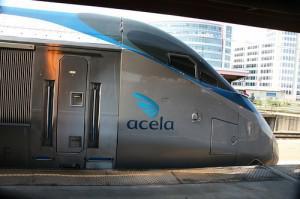 Early in the current presidential administration high speed rail was bandied about as a potential boon for the economy and the environment. Political, practical, and economic obstacles arose to a national network of high speed trains. At one point, $53 billion in funding was proposed to develop rail. It looked like the government would take a regionally appropriate approach. Over the past three years there has been a change in leadership in many of the states involved in these regional networks, leading to a change in approach to developing these networks. We believe that these local networks are key to high speed rail’s success.
Early in the current presidential administration high speed rail was bandied about as a potential boon for the economy and the environment. Political, practical, and economic obstacles arose to a national network of high speed trains. At one point, $53 billion in funding was proposed to develop rail. It looked like the government would take a regionally appropriate approach. Over the past three years there has been a change in leadership in many of the states involved in these regional networks, leading to a change in approach to developing these networks. We believe that these local networks are key to high speed rail’s success.
At one point, President Obama identified 10 potential locations that would receive funding. Since that time, much of the high speed rail discussion has dissipated. A recent article in the New York Times detailed the rise of Amtrak in the Northeast corridor. Making train travel more enticing than air will require economic benefits and time savings. In addition, focusing on existing lines, like the Northeast corridor, which extends from Boston through New York City and down to Washington DC, may prove more cost effective.
The Northeast Corridor’s ridership has increased over the past dozen years since the unveiling of the Acela, Amtrak’s high speed line. According to the New York Times article, “Amtrak said, 75 percent of travelers go by train. . . [Prior to 2001,] Amtrak had just over a third of the business between New York and Washington.” (For more facts about ridership on the line, check out last week’s Five Friday Facts).
A few years ago, we ran a Five Friday Facts with some “sobering” statistics about budgets, proposals, and ridership for high speed rail. Take a look at some of the obstacles that face the development of this transportation.
[Image source]

